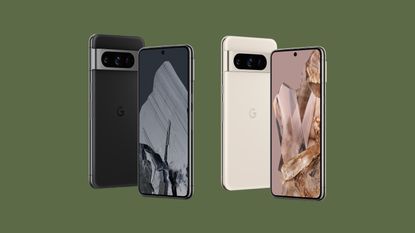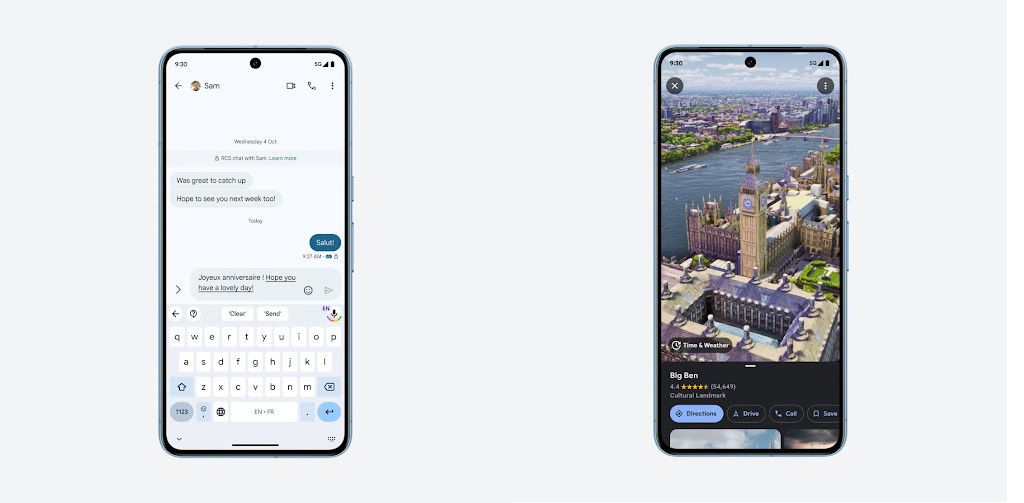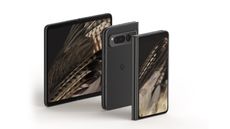Google Pixel 8 Pro might change our relationship with photography
The Google Pixel 8 Pro phone goes all out to inject generative AI abilities into this essential everyday object

Have we reached peak smartphone? The premium brands have had their annual launches – such as the Samsung Galaxy S23 and the Apple iPhone 15 – and offer only incremental improvements on what was available the previous year. Now it’s Google’s turn, with the debut of the Google Pixel 8 and Pixel 8 Pro.
What’s most notable about the eighth iteration of the company’s flagship Android device is how AI has become much more embedded and present. Google’s AI systems have sneaked their way into search as well as generative systems like text and image generation, not to mention photographic ‘support’.
Google Pixel 8 Pro and its AI revolution

The Pixel 8 Pro has four cameras in total
It’s the last where the Pixel has traditionally excelled, but while the latest version takes fantastic photographs, it feels that the emphasis is shaping the world one sees, rather than displaying it as it is. Apple’s equally impressive photographic capabilities are pitched more at the traditional photographer, someone who will process after the shoot, rather than use the rather cruder tools in the phone itself. iPhones have been able to shoot RAW files for a while, whereas it’s a new option on the Pixel 8 Pro.
A smartphone isn’t a camera, of course, but a very sophisticated image processor. ‘Pro Controls’ aside, both of the Pixel 8 phones have a suite of AI-driven tools that are designed to buff out the rough edges of life. The Pro has four cameras, including a 50 MP main camera, an ultrawide, telephoto and 10.5 MP front camera. Photographic results can be shaped using ‘Best Take’, which blends a burst of similar images to ensure that everyone is smiling, or not blinking.

With its polished aluminium frame, the Pixel 8 Pro is a beautifully made device
There’s also the forthcoming Magic Editor (unavailable at time of review), something Google describe as an ‘experimental editing experience’. This builds on the Magic Eraser tool introduced in the Pixel 7 phones but doesn’t just allow for stray photobombers to be seamlessly and automatically banished. Instead, you can apparently reposition objects within the frame, change an overcast sky to a dramatic sunset and inflict all manner of trickery on even the most casual snapshot.
It begs the question, what next? This will be an experimental feature, with the computations presumably taking place in the cloud (hence recent warnings about the burgeoning energy consumption of relatively trivial AI applications). Google is prefacing the feature with a warning, acknowledging that ‘… we know there are going to be times when the result isn’t exactly what you imagined’. This conjures up a potential hellscape of twisted AI fingers and unwanted excursions into the uncanny valley, all taking their place in your precious photo folder.

AI-generated wallpapers offer bespoke unique imagery
Also available is a slightly gimmicky AI-generated wallpaper app, which conjures up backdrops based on a set of pre-loaded cues. Promised this week are even more AI-driven features, including Zoom Enhance, which lets you zoom into a photograph and use generative AI to sharpen up the details; a more flexible and powerful Magic Eraser tool, and the introduction of Audio Magic Eraser, which is designed to ‘clean up’ buzzy and blowy video soundtracks. More alarming still is the imminent arrival of Google’s conversational AI model, Bard, which can be used to generate descriptions, social media posts and other potential nuisances.

Google Pixel 8 Pro
The AI feature creep notwithstanding, this is properly premium device, especially the Pro model. A polished aluminium frame and matte back glass support a 6.7in screen, making it a fraction larger than the iPhone 15 Pro Max. If you can face covering this beautifully finished device with a case, then your Pixel 8 will undoubtedly last a while; another quiet advance is the fact that the Pixel 8 comes with seven years of software support, guaranteeing you software and security updates until October 2030. Pixel 7 Pro owners can say goodbye to new software from October 2025.

Google Pixel 8 Pro
This projected longevity brings us back to the first question; have we reached the point where always opting for an annual (or even biannual) update is simply too resource-hungry. It’s true that used phones cascade down through the second-hand marketplace for years, but the Pixel is very far from being a simple device to repair (although Google has promised to keep a stock of spare parts for seven years as well). It’ll be interesting to see how many buyers can hold on to their Pixel into the 2030s.
The devices ship with the new Android 14 operating system, a stealthy upgrade that makes sure to flatter the required muscle memory and physical interactivity of previous versions so as not to put anyone off. Also new to market is the Google Pixel Watch 2, which majors in bolstered fitness and health tracking, along with better speed and battery life.

The complete suite of new Google Pixel products, October 2023
Surprisingly, the Pixel range has a relatively small share of the overall phone market (about 5 per cent), especially given Google’s huge sway and overall control of the Android OS. It is undoubtedly a fantastic device, fast and powerful, and rich with features. However, it also offers the very first interaction with generative AI for huge numbers of people, potentially adding yet another layer of confusion and distraction to an already over-saturated world.
Google Pixel 8 Pro, from £999, Store.Google.com
Wallpaper* Newsletter
Receive our daily digest of inspiration, escapism and design stories from around the world direct to your inbox
Jonathan Bell has written for Wallpaper* magazine since 1999, covering everything from architecture and transport design to books, tech and graphic design. He is now the magazine’s Transport and Technology Editor. Jonathan has written and edited 15 books, including Concept Car Design, 21st Century House, and The New Modern House. He is also the host of Wallpaper’s first podcast.
-
 Gallery Fumi makes LA debut with works from Max Lamb, Jeremy Anderson and more
Gallery Fumi makes LA debut with works from Max Lamb, Jeremy Anderson and moreFumi LA is the London design gallery’s takeover of Sized Studio, marking its first major US show (until 9 March 2024)
By Tianna Williams Published
-
 Brazil’s Casa Subtração contrasts dramatic concrete brutalism with openness
Brazil’s Casa Subtração contrasts dramatic concrete brutalism with opennessCasa Subtração by FGMF is defined by brutalist concrete and sharp angles that contrast with the green Brazilian landscape
By Ellie Stathaki Published
-
 Level up at the The Residence, Claridge’s new André Fu-designed penthouse
Level up at the The Residence, Claridge’s new André Fu-designed penthouseClaridge’s The Residence is a new purpose-built two-tier glasshouse overlooking London’s skyline
By Lauren Ho Published
-
 Google Pixel Watch 2 wants to look after you
Google Pixel Watch 2 wants to look after youThe Google Pixel Watch 2 harnesses the power and potential of FitBit, which the company acquired in 2022, for both personal wellness and safety
By Pei-Ru Keh Published
-
 We open up the new Google Pixel Fold and find out about the future of flexible screens
We open up the new Google Pixel Fold and find out about the future of flexible screensGoogle’s Claude Zellweger offers insights into the design approach behind the new Google Pixel Fold, as we report on life with the company’s first foldable
By Jonathan Bell Published
-
 The new Google Pixel Fold is the tech giant’s first foray into foldables
The new Google Pixel Fold is the tech giant’s first foray into foldablesThe announcement of Google’s first foldable should shake up the market for these esoteric mobile devices: how does it compare to the competition?
By Jonathan Bell Published
-
 Google Pixel 7a, the company’s newest mass-market model, joins an expanded Pixel eco-system
Google Pixel 7a, the company’s newest mass-market model, joins an expanded Pixel eco-systemSlimmed down and slightly shrunken, the Google Pixel 7a still retains the core talents of the seventh edition of Google’s powerful phone series
By Jonathan Bell Published
-
 The finest Google Doodles of all time
The finest Google Doodles of all timeOn 20 August 1998, a week before a two-year-old Google become an incorporated company, founders Larry Page and Sergey Brin were heading to Burning Man festival. To mark themselves ‘out of office’ on their email signatures, they decided to overlay the famous Burning Man stick-figure on the Google logo (which then came with a Yahoo-style exclamation mark, as if it needed to announce itself). The idea lay dormant until 2010, when then-intern Dennis Hwang (who went onto become Google webmaster, amongst other more recent titles) was tasked with decorating the logo for Bastille Day, sparking eight years of marking important moments in history with a graphic, digital ephitaph. What started as an ‘out of office’ scribble has become an artform, celebrating Calder to Kadinsky; Zaha Hadid to Mies van der Rohe.
By Elly Parsons Last updated
-
 Pixel 6 Pro is ‘premium redefined’ says Google’s Ivy Ross
Pixel 6 Pro is ‘premium redefined’ says Google’s Ivy RossIvy Ross, Google’s vice president of Design for Hardware Products, on the design decisions behind the new Pixel 6 and Pixel 6 Pro phones
By Jonathan Bell Published
-
 The new Google Nest Hub is an alarm clock on steroids
The new Google Nest Hub is an alarm clock on steroidsMeet your new, improved and super smart bedtime companion
By Jonathan Bell Last updated
-
 Ivy Ross judges Wallpaper* Design Awards 2021
Ivy Ross judges Wallpaper* Design Awards 2021Ivy Ross, the vice president of design for hardware at Google, on the challenges of designing during a pandemic, and her thoughts on our annual Wallpaper* Design Award honours
By Pei-Ru Keh Last updated










